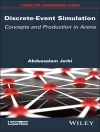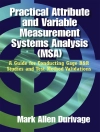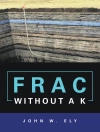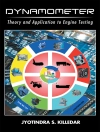With the increased presence of nanomaterials in commercial products such as cosmetics and sunscreens, fillers in dental fillings, water filtration process, catalysis, photovoltaic cells, bio-detection, a growing public debate is emerging on toxicological and environmental effects of direct and indirect exposure to these materials. Nanomaterials: A Danger or a Promise? forms a balanced overview of the health and environmental issues of nanoscale materials.
By considering both the benefits and risks associated with nanomaterials, Nanomaterials: A Danger or a Promise? compiles a complete and detailed image of the many aspects of the interface between nanomaterials and their real-life application. The full cycle of nanomaterials life will be presented and critically assessed to consider and answer questions such as:
How are nanomaterials made?
What they are used for?
What is their environmental fate?
Can we make them better?
Including coverage of relevant aspects about the toxicity of manufactured nanomaterials, nanomaterials life cycle, exposure issues, Nanomaterials: A Danger or a Promise? provides a comprehensive overview of the actual knowledge in these fields but also presents perspectives for the future development of a safer nanoscience. This comprehensive resource is a key reference for students, researcher, manufacturers and industry professionals alike.
Inhoudsopgave
1.The Polyol Process.-2.Synthesis of Organic and Bio-organic Nanoparticles: An overview of the Preparation Methods.- 3.Quantum Dots as Biomarker.- 4.Magnetic Nanaparticles for Magnetic Resonance Imaging and Hyperthermia Applications.- 5.Nanomaterials: Applications in Drug delivery.- 6.Titanium dioxide in photocatalysis.- 7.Nanotechnology assets in biosensors design for environmental monitoring.- 8.Respiratory toxicity of carbon nanotubes.- 9.Fate and health impact of inorganic manufactured nanoparticles.- 10.Impacts and physico-chemical behavior of inorganic nanoparticles in the environment.- 11.Ecotoxicological impact of Zn O and Cd E (E = S, Se, Te) quantum dots on microorganisms.- 12.Cerium oxide nanoparticles: structure, applications, reactivity and eco-toxicology.- 13.Nanomaterials from renewable resources.- 14.Emerging questions for emerging technologies : is there a law for the Nano?.- 15.Nanomaterials in political life. In the democracies of nanotechnology
Over de auteur
Dr Roberta Brayner was recruited as Associate Professor by Paris Diderot University in 2003 to expand its nanotechnology program. She conducts basic and applied research at the intersection of chemistry, physics and biology towards (i) Synthesis of semiconductors and noble metals using the Polyol Process (ii) the development of hybrid “living” materials based on micro-algae and nanoparticle interactions and also (iii) the toxicological impact of nanoparticles in the environment. Her research has been supported by grants from ANR, ECO-Sud and Nano Sciences-Ile de France. Dr Roberta Brayner obtained her BS in Chemical Engineering in Brazil in 1995 and her Ph.D. in Chemistry from Paris Diderot University in 2001. She co-authored over 50 publications and 8 book chapters. She is a frequent contributor to Journal of Material Chemistry, Chemistry of Materials, Nano Letters, and other peer-reviewed journals. She is a member of the Nanoscience & Society Bureau at C-Nano Ile de France.
Professor Fernand Fiévet is a Senior Professor at Paris Diderot University. He conducts basic and applied research in materials science towards (i) the controlled synthesis of metallic nanoparticles and (ii) the development of high magnetic materials. He is inventor of the Polyol process. He co-authored over 100 publications. He is a frequent contributor to Advanced Materials, Journal of Material Chemistry, Chemistry of Materials, Nano Letters, and other peer-reviewed journals.
Dr. Thibaud Coradin, born in 1970, is Directeur de Recherche at the CNRS since 2007. He is currently leading the « Materials and Biology » group in the Laboratoire de Chimie de la Matière Condensée de Paris (UPMC-P6). His research topics include silica biomineralization, green sol-gel chemistry, bionanocomposites, biomaterials and sol-gel bioencapsulation. He co-authored over 75 publications and 10 book chapters. He is a member of the Advisory Editorial Board of Current Medicinal Chemistry and Silicon.












